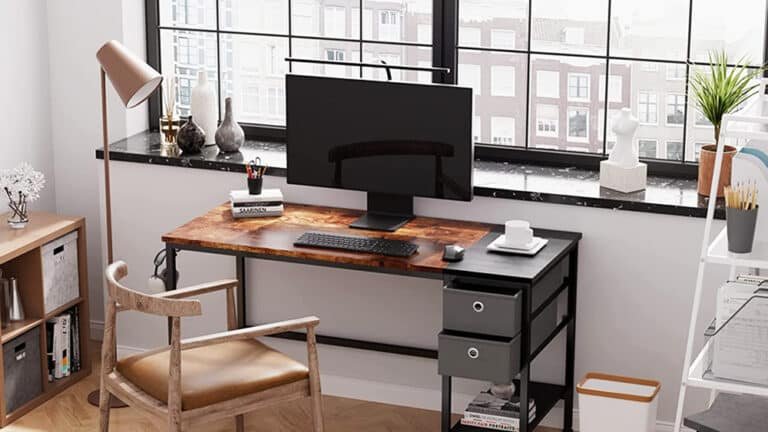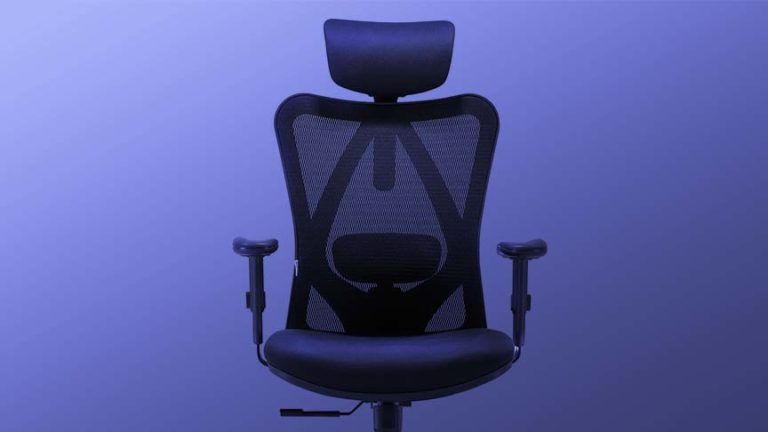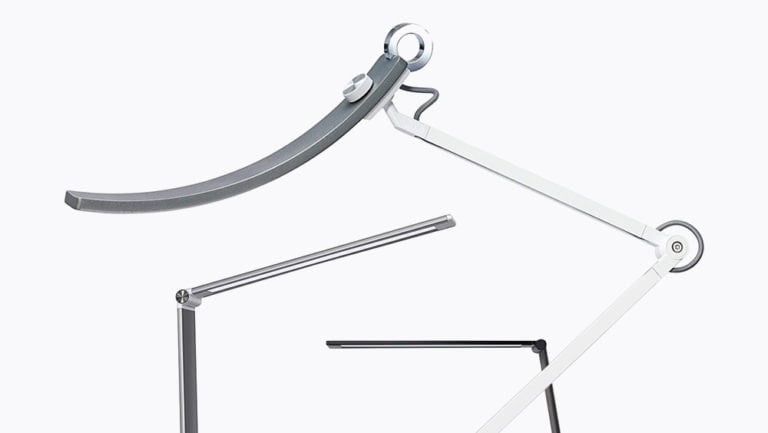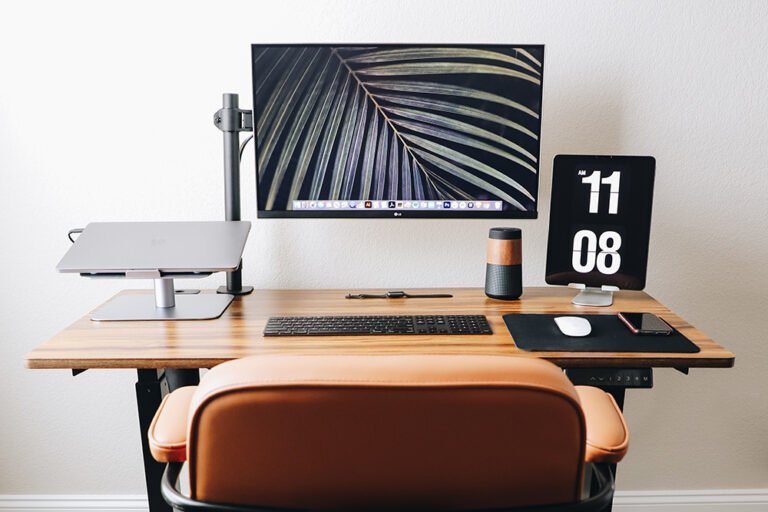How to organize a home office in 3 steps: create a productive and harmonious space
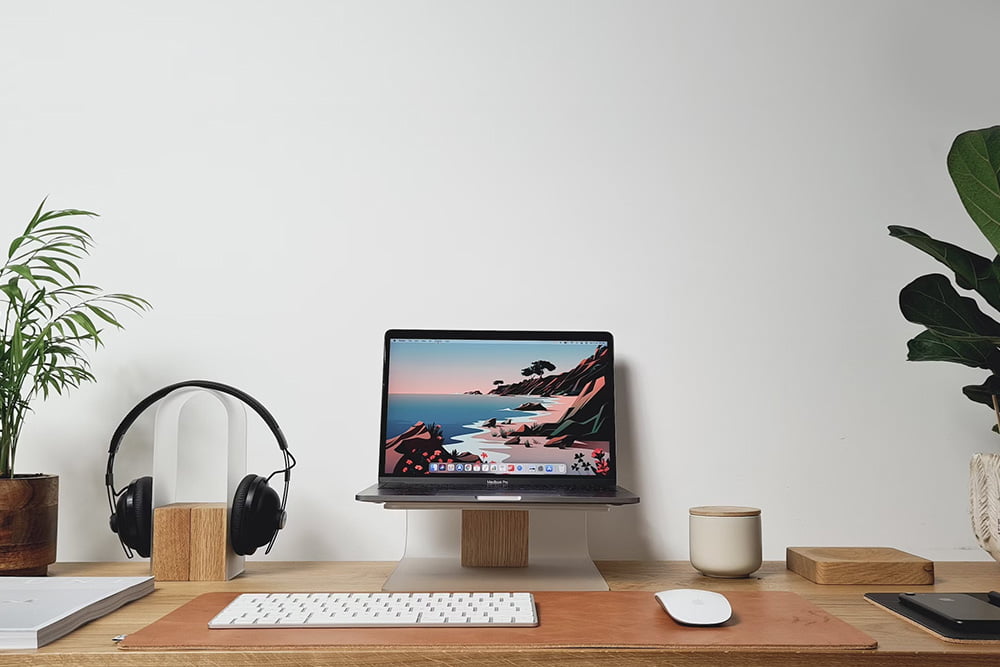
Learning how to organize a home office and, more importantly, how to keep it organized, can make the difference between a productive environment and a chaotic one. I know this well, because I have worked from my home office for a total of over 10 years and if I didn’t follow certain organizational guidelines it would have been impossible.
From how to organize your home office environment to how you organize your documents and your desk, in this guide I will help you understand how to create a functional, pleasant and orderly space that will boost your productivity without putting too much effort into your day-to-day life.
1. How to organize your home office environment

Home office organization starts with the environment. That’s why it’s important to consider where we place our office and what elements of the environment can cause distractions or hinder our daily organization.
Finding the right space
The previous step to organize a successful home office is to have selected the right space, as I explain in my article on how to set up a home office. To summarize a lot, look for a quiet place, away from distractions, with enough natural light and well ventilated.
Try to set up a specific area of your home to be used exclusively as an office, allowing you to better concentrate on your work and minimize domestic distractions. Avoid working from the living room or bedroom as much as possible, as these spaces are often associated with leisure and relaxation activities.
Make sure the space is large enough to fit the furniture and accessories you need for your work, and some decorative elements that allow you to personalize the space. Comfort is key to improving your performance and concentration.
Eliminate unnecessary distractions
Identify and eliminate objects from your environment that are not related to your work and that can distract you, such as flashy personal items, toys or electronic devices that you don’t need while working.
It’s okay if you have some decorative objects that help you personalize your space and feel more at ease, but if they are distracting, keep only those that are essential to your work.
2. How to organize your desk

Keep only the tools and materials you use frequently throughout your workday on your desk. By having only the essentials on hand, you can better focus on priority tasks and reduce the chances of getting distracted or wasting time looking for things you need.
For example, something as simple as having a pen and notebook handy allows you to jot down important ideas or take notes during a call. However, having your console controllers on your desk or in a drawer that you use frequently is a constant invitation to stop working and start playing, so keep them somewhere else.
Keep on hand the things you use in your daily work, store the things you do not.
Similarly, put away things you don’t use frequently to maintain a tidy, distraction-free work environment. By maintaining a clear division between what you need to have on hand and what you don’t, you will achieve greater efficiency in your workflow.
Choose a desk that facilitates organization
In large part, the desk you pick will make it more or less easy for you to get organized. A desk with shelves and drawers is easier to keep organized than one without. However, not everyone has the same needs and tastes, so I recommend you have a look at my guide on how to choose a desk.
Use accessories that make organization easier
Wireless keyboard and mouse
Using a wireless keyboard and mouse will instantly clear your desk. Gone are the days of battery-powered keyboards or keyboards that were frequently disconnected from the computer. Good wireless keyboards and mice charge via USB in a matter of minutes and can take weeks or months to recharge again.
Laptop Stand
Some laptop stands leave a handy space under the computer to store the keyboard, mouse or graphics tablet, for example. In addition, there are those that allow you to collect the computer cables in the back so that they are not in sight. Check out the best ones in my guide to the best laptop stands.
Monitor stand
There are two types of monitor stands, and each has its advantages in terms of desktop organization:
- Monitor arm stand: which are anchored to the desk top and use a VESA anchoring system to elevate the monitor. Their main advantage is that, since they do not have to rest on their base, the monitor no longer takes up space on the desk.
- Monitor lift stand: These are supports that resemble a small tray or table that is placed on the desk. They raise the monitor above the desk, leaving a gap at the bottom of the stand, which is very practical for hiding the mouse, keyboard, etc. Some even include drawers and cell phone holders.
Cell phone holder
How many times are you working, need to use your cell phone and can’t find where it is because it’s buried under documents or inside a drawer? Having a specific holder to place it in will help you to always have it at hand, not miss important notifications and protect it from possible domestic accidents. In addition, some stands also have connections to charge your phone if you wish.
The right monitor
Sometimes I see people with 2, 3 or even more monitors on their desk, when in many occasions their screen space needs could be solved with a single large monitor, a widescreen monitor or a portrait monitor like the one you can find in this guide to the best LG monitors.
Office chair that can be stored away
When you’re short on desk space, it’s especially handy to have a chair whose armrests can be lowered or folded down to fit on your desk. Here are several options in my guide to the best office chairs.
Pencil holder
This is such an obvious accessory that we often overlook it, so I’ve decided to include it. Storing pens and pencils in a pencil holder is much more practical and cleaner than having them in drawers and on shelves, where they can slip, dirty documents, etc.
A wastebasket
Whenever you need to get rid of unusable documents and you don’t have a wastebasket handy, they end up taking some corner of your desk, running the risk of getting mixed up with other documents. Having a wastebasket next to your desk helps you keep it clear of disposable documents at all times.
3. How to organize your paperwork
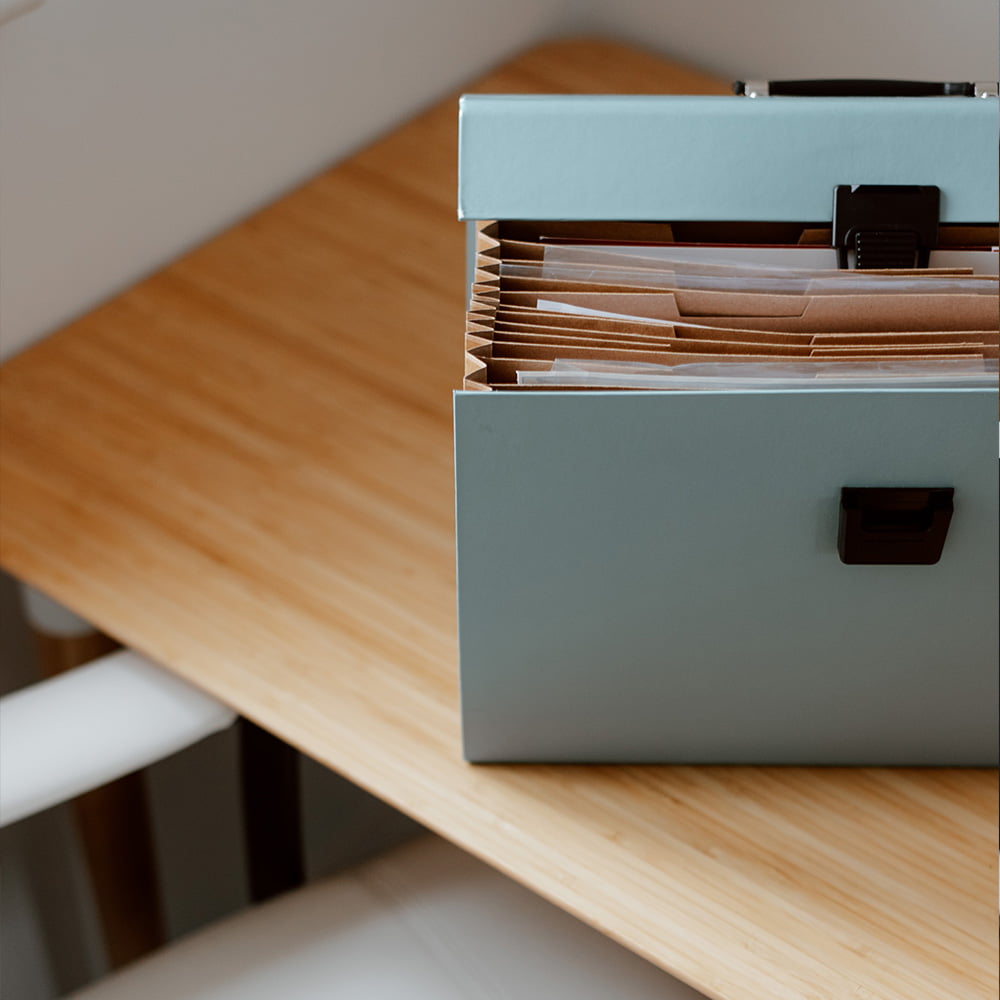
Thinking ahead about an effective organization system will help you keep your home office tidy and make it easier to access your paperwork:
Use trays and organizers
Trays and organizers are useful tools for keeping your desk tidy. Use inboxes and outboxes to manage the incoming and outgoing paperwork you handle on a daily basis. Also use desk organizers to store pens, paper clips, sticky notes and other small materials. Keep these items within easy reach to save time and avoid clutter.
Digitize as many documents as you can for archiving
Consider scanning all documents that you don’t need to physically deliver at some point. This usually greatly reduces clutter in your office.
Use a scanner or a mobile app like Apple Notes to convert your documents to digital format and store them in an organized folder on your computer or in the cloud. Think about what folder structure and file names you are going to use before you start saving them.
Remember to make regular backups to avoid data loss
Identify and classify your physical documents
Use binders, folders, and labels to systematically classify and organize the documents that you need to file and that you need to keep printed and therefore have not been able to digitize.
Establish clear categories and use colour separators to easily identify each category. For example, you can have categories such as “Car Insurance, Mortgage, Social Security, Taxes, Investments, etc.”.
Each time you receive a new document that you need to keep printed, be sure to place it in the appropriate sorter. Similarly, return documents you have taken out to the sorter when you no longer need to use them.
Keep your documents organized on a daily basis
Clean up regularly, discard or file unnecessary documents, and make sure everything is in its place at the end of the day so that the chaos doesn’t escalate. It’s easier to clear the desk when there are only a couple of documents out of place than to wait for several dozen to accumulate.
Conclusions on how to organize a home office
Organizing a home office is essential to achieving an efficient and comfortable work environment. By following the tips and strategies presented in this article, you can create a space that promotes productivity, order, and harmony.
Remember to carefully select the right space, plan and design your office intelligently, implement an effective organization system and maintain a clean and tidy environment. Also take advantage of ergonomic elements and establish clear boundaries between your personal and professional life.

